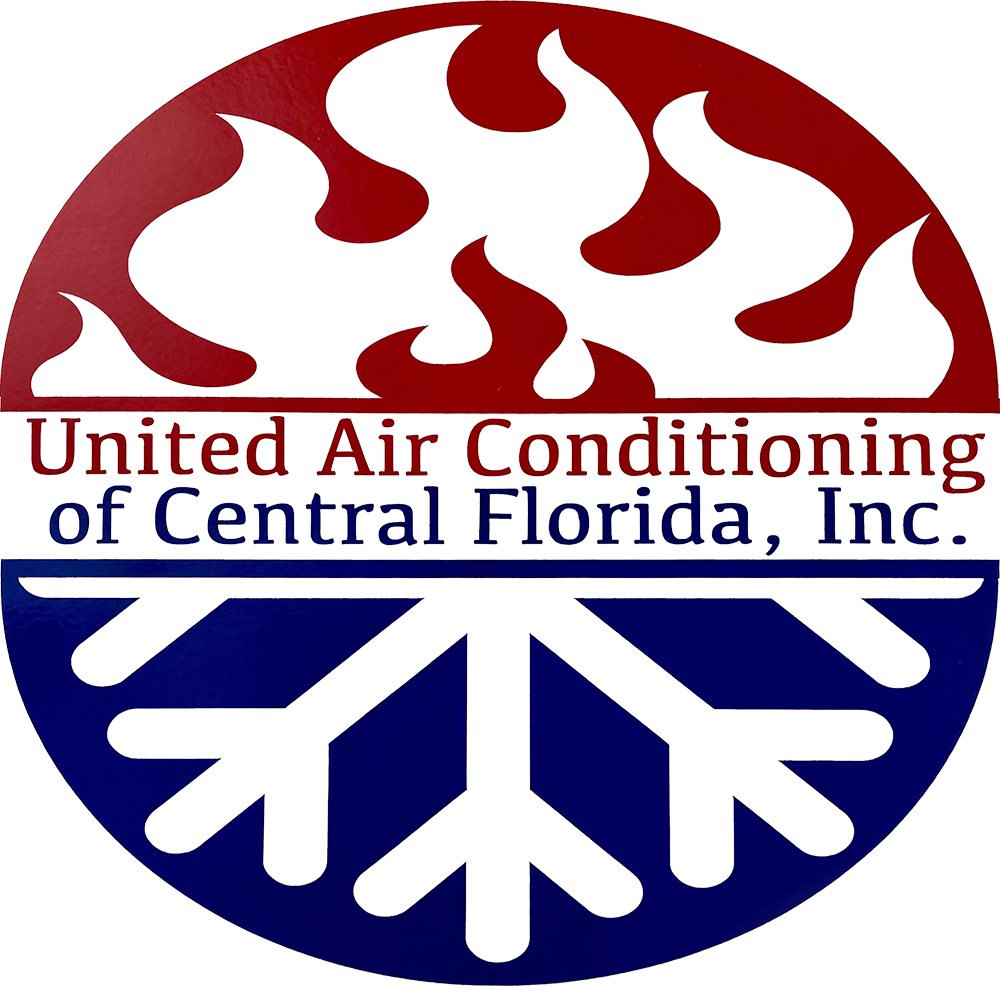AC and Heating 101
United Air Conditioning of Central Florida, Inc.
Popular Heating and AC Terms
When it comes to the HVAC industry, there are many common terms technicians use that may not be as familiar to homeowners. To help you identify some of the terminology we use, the team at United Air Conditioning of Central Florida, Inc has written the helpful guide below. In addition to checking out our helpful guide below, be sure to give us a call if you need routine HVAC maintenance or system repair services. We're available 24/7 for emergency services!
HVAC
This acronym stands for Heating, Ventilation, and Air Conditioning, and encompasses the whole system.
SEER
Seasonal Energy Efficiency Rating. This refers to the efficiency of the system. The higher the number, the more efficient and cost effective the system is.
Central Air Conditioning Unit
This can be either:
- A package unit that's usually seen in manufactured or mobile homes. With this system, the condenser, compressor, and evaporator are all in one cabinet placed on the roof or next to the house. This kind of air conditioner often includes electric heating coils or a natural gas furnace. This type of unit eliminates the need for a separate furnace indoors as the AC and central heater are combined.
- A split system, which has a separation between the condenser and the evaporator. The condenser and compressor are in a cabinet outside the house, as the evaporator is in its own cabinet inside. As hot air is removed and transported to an evaporator coil as a warm liquid, the expansion of the liquid causes it to cool, thus cooling the air in the home.
Compressor
An air conditioning compressor is a mechanical motor which pumps and compresses the Freon gas into the high-pressure side of the cooling cycle and causes the refrigerant to circulate through the system. It's the most expensive and important component in a system, and without it there's, no cooling. It's usually found inside the condensing unit.
Condenser
The outside, or condensing unit, in a residential system is commonly referred to as a "condenser." This is because it's the part of your system that condenses the refrigerant or Freon.
Evaporators or Evaporator Coils
Also referred to as a cooling coil or an indoor coil. Liquid refrigerant or Freon travels through a sealed copper tube and into the evaporator coil and then goes through a very tiny hole or metering device causing the liquid’s pressure to drop significantly. This causes the refrigerant to expand which turns it into a low-temperature, low-pressure gas.
Fan Coils
A fan coil is an indoor component of an air conditioning or heat pump system. Essentially, it's an electric furnace or heater with an evaporator coil, a resistance heater, a blower, and a drain pan built inside. The electric heater provides heat on cold days and the evaporator supplies cold on hot days.
Freon or Refrigerant
The cooling medium of an air conditioning or refrigeration system is called a refrigerant. In most residential air conditioning and many refrigeration systems is called R-22 or Freon which is a chlorofluorocarbon or CFC. Freon is an EPA-controlled substance which is deemed hazardous if released into the environment and will cause damage to the Earth’s ozone layers if not properly contained.
Heat Pumps
Heat pumps are a lot like air conditioners but give out both heating and cooling. Heat pumps and air conditioners both work on the same basic principles, but heat pumps have a few extra controls like a reversing valve which effectively reverses the flow, taking the heat from outside and transferring it inside for use in the colder winter months.
Humidistat
All top-quality brands can control the humidity in your home. Sometimes it's a separate control that monitors and controls the humidity. Carrier calls theirs “Thermidistat.”
Thermostat
A thermostat maintains the proper desired temperature in homes and businesses by signaling to your HVAC equipment when appropriate temperature settings are reached. There are several types of thermostats available, and they can vary from the simple to the complex.
Two Speed Central Air Conditioning
Two speed units are very much like traditional air conditioners, but they can run on low speed up to 80% of the time, which uses less electricity than a conventional unit. When temperatures rise, two speed units shift into high speed to maintain the set point of the thermostat.
Ultraviolet Filter
UV is a frequency of energy generated by the sun. Since UV is invisible, it’s not really light, but the term "ultraviolet light" has become the standard term for UV energy. Most light sources generate a small amount of UV, but in order to purify air, UV must be generated by electric lamps similar to ordinary fluorescent lights. When coupled with an HVAC system, a UV filter sterilizes almost 100% of viruses, mold spores, germs, bacteria, fungi, and other harmful microorganisms as they pass through your HVAC system.
Zoning or Zone HVAC Systems
Zoned cooling is the process of dividing a home or a building into two or more separate zones, which gives more control over the cooling and heating system allowing for individual control of temperature in each of these zones. There are several ways of accomplishing this depending on the size of the home or building.
service Area
Leesburg, FL
Lake County, FL
Business Hours
24-Hour Emergency Services Available


Share On: